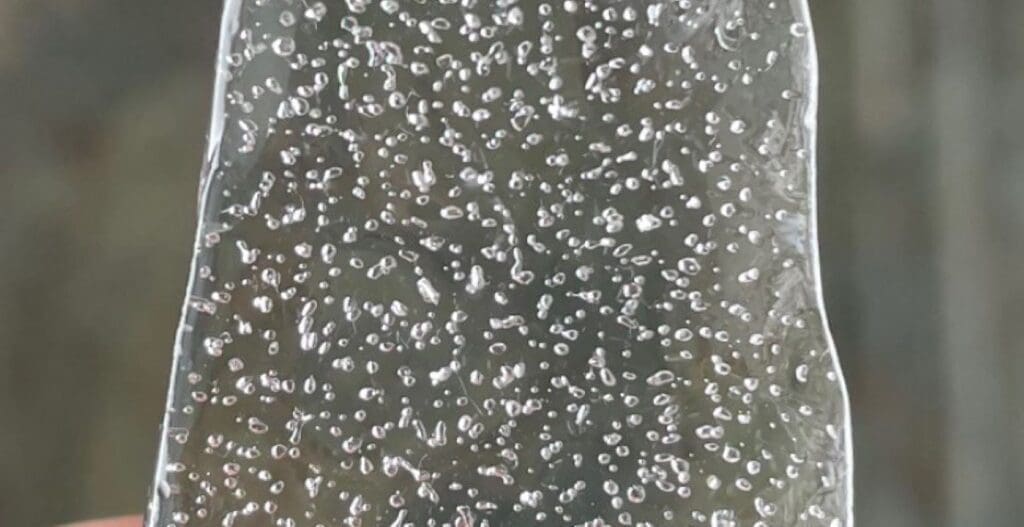Developing a catalyst to decompose refrigerants, which are 1,300 times more potent than carbon dioxide, using industrial waste known as red mud.
By National Research Council of Science & Technology
A technology has been developed to decompose refrigerants, a greenhouse gas 1,300 times more potent than carbon dioxide, using challenging-to-handle industrial waste.

Dr. Ryi, Shin-kun’s research team at the Hydrogen Convergence Materials Lab of the Korea Institute of Energy Research (KIER) has successfully developed a catalyst from industrial waste known as ‘red mud,’ a byproduct of aluminum production. This catalyst can decompose HFC-134a refrigerant, commonly used in household appliances like air conditioners and refrigerators, with an efficiency of 99%.
- Red Mud: An industrial byproduct remaining after extracting aluminum oxide from the mineral bauxite. It contains oxides of iron, aluminum, silicon, and other elements, giving it a red color. More than 200,000 tons are produced annually.
- HFC-134a: A compound in the HFC (hydrofluorocarbon) series developed to replace traditional refrigerants like CFCs (chlorofluorocarbons) and HCFCs (hydrochlorofluorocarbons). It is primarily used as a refrigerant in refrigerators and air conditioners. HFC-134a has a global warming potential (GWP) 1,300 times greater than carbon dioxide.
When producing 1 ton of aluminum, about 1 to 1.5 tons of red mud are generated as a byproduct. Currently, most red mud is disposed of by landfilling or dumping into lakes. Due to its high alkalinity and heavy metal content, red mud poses significant soil and water pollution problems.
Meanwhile, the refrigerant HFC-134a, used in air conditioners and refrigeration systems, is processed by waste gas treatment companies according to relevant laws. It is mainly treated through combustion and plasma methods. However, combustion generates secondary pollutants such as nitrogen oxides, and high-temperature decomposition using plasma requires significant energy and equipment costs. Additionally, as the reactor size increases, efficiency decreases. Therefore, there is a need for technology that can stably eliminate refrigerants at low temperatures with minimal pollutant generation.
To overcome these limitations, the research team developed a catalytic decomposition technology that can operate at lower temperatures compared to combustion and plasma methods. They focused on the fact that the various metal components in red mud, such as iron and aluminum, can interact to form a powerful and stable catalyst for refrigerant decomposition.
- Iron and aluminum make up more than 50% of red mud and are utilized as key catalysts for decomposing HFC-134a.
Red mud has a porous structure with a large surface area per unit mass and high thermal stability, allowing reactants to flow efficiently and inhibiting the physical and chemical degradation of the catalyst. Additionally, it creates an optimal environment for interfacial phenomena such as adsorption and electro-migration, which are essential for catalytic reactions, thereby enhancing the durability and activity of the catalyst.
To further enhance the decomposition performance, the research team employed a simple heat treatment process to induce interactions among calcium (Ca), silicon (Si), and aluminum (Al) components, forming a composite material of tricalcium aluminate (C3A) and gehlenite (C2S). These materials, which are used to increase the strength of cement, strengthen the binding of catalyst particles and increase the reaction surface area, thereby improving decomposition performance.
Additionally, the hydrogen fluoride (HF) produced during the decomposition of HFC-134a reacts with calcium oxide (CaO) to form calcium fluoride (CaF2). Chemically stable calcium fluoride forms a thin film on the catalyst surface, acting as a protective shield to prevent the deactivation and protect the catalyst.
The catalyst developed by the research team demonstrated excellent refrigerant decomposition performance, maintaining a high decomposition rate of over 99% for 100 hours. Additionally, it can be produced at a rate of 1 kg per hour through simple drying and grinding processes at the lab scale, making it suitable for mass production at full scale. Particularly, since it is made by recycling industrial waste, there are no raw material costs, and it can reduce waste disposal costs while potentially generating additional revenue.
Dr. Ryi, Shin-kun, the research leader, stated, “Red mud is a strongly alkaline substance that can cause severe environmental pollution if it enters the surrounding environment, but there have been no suitable technologies to process and recycle it.” He added, “The developed catalyst manufacturing technology not only recycles waste to reduce environmental pollution but also effectively decomposes refrigerants, which have a strong greenhouse gas effect, with excellent performance.”
More information: In-Heon Kwak, Eun-Han Lee, Jung-Bae Kim, Sung-Chan Nam, Shin-Kun Ryi, ‘Hydrolysis of HFC-134a using a red mud catalyst to reuse an industrial waste’, Journal of Industrial and Engineering Chemistry (vol. 136, pp 123-130; 2024); DOI: 10.1016/j.jiec.2024.02.013 | Press Release / Material. Featured image: Industrial waste red mud raw material (left) and pelletized red mud catalyst (right) Credit: Korea Institute of Energy Redearch




